 Edisi 20 Mei
2001 Edisi 20 Mei
2001 |
Dari Redaksi |
Rekan-rekan Alumni,
Kembali kita bertemu dan kami tampilkan resensi mengenai film
terbaru yang akan beredar minggu depan, The Man Who Cried. Situs
pilihan minggu ini kami pilihkan "SCIENCE FOR THE MILLENIUM".
Selamat berakhir pekan.
 |
|
anna
kounikova |
  
  |
|
KESEHATAN |
ANGINA
What is
angina?
ANGINA PECTORIS ("ANGINA") IS A recurring pain or
discomfort in the chest that happens when some part of the heart
does not receive enough blood. It is a common symptom of coronary
heart disease (CHD), which occurs when vessels that carry blood to
the heart become narrowed and blocked due to atherosclerosis
Angina feels
like a pressing or squeezing pain, usually in the chest under the
breast bone, but sometimes in the shoulders, arms, neck, jaws, or
back. Angina is usually precipitated by exertion. It is usually
relieved within a few minutes by resting or by taking prescribed
angina medicine.
What brings
on angina?
Episodes of
angina occur when the heart's need for oxygen increases beyond the
oxygen available from the blood nourishing the heart. Physical
exertion is the most common trigger for angina. Other triggers can
be emotional stress, extreme cold or heat, heavy meals, alcohol, and
cigarette smoking.
Does angina
mean a heart attack is about to happen? An episode of
angina is not a heart attack. Angina pain means that some of the
heart muscle in not getting enough blood temporarily--for example,
during exercise, when the heart has to work harder. The pain does
NOT mean that the heart muscle is suffering irreversible, permanent
damage. Episodes of angina seldom cause permanent damage to heart
muscle.
In contrast, a
heart attack occurs when the blood flow to a part of the heart is
suddenly and permanently cut off. This causes permanent damage to
the heart muscle. Typically, the chest pain is more severe, lasts
longer, and does not go away with rest or with medicine that was
previously effective. It may be accompanied by indigestion, nausea,
weakness, and sweating. However, the symptoms of a heart attack are
varied and may be considerably milder.
When someone
has a repeating but stable pattern of angina, an episode of angina
does not mean that a heart attack is about to happen. Angina means
that there is underlying coronary heart disease. Patients with
angina are at an increased risk of heart attack compared with those
who have no symptoms of cardiovascular disease, but the episode of
angina is not a signal that a heart attack is about to happen. In
contrast, when the pattern of angina changes--if episodes become
more frequent, last longer, or occur without exercise--the risk of
heart attack in subsequent days or weeks is much higher.
A person
who has angina should learn the pattern of his or her angina--what
cause an angina attack, what it feels like, how long episodes
usually last, and whether medication relieves the attack. If the
pattern changes sharply or if the symptoms are those of a heart
attack, one should get medical help immediately, perhaps best done
by seeking an evaluation at a nearby hospital emergency room.
 klik untuk info lengkap klik untuk info lengkap |
|
DIRGANTARA |
LIGHT COMBAT AIRCRAFT
India 2000

The LCA (Light Combat Aircraft) is
India's second indigenous jet fighter design, after the HF-24 Marut
of the 1950s. It's the world's smallest, light weight, multi-role
combat aircraft designed to meet the requirements of the Indian Air
Force as its frontline multi-mission single seater tactical aircraft
during the period 2000 - 2020. Development began in 1983; the basic
design was finalised in 1990; the first prototype rolled out on 17
November 1995. On 04 January 2001 at 10.18 a.m. the first LCA
Prototype TD-1 (Technology Demonstrator-1), finally took off on its
first flight from Yelahanka AFS.
The configuration is a delta wing, with no tailplanes or foreplanes,
and a single vertical fin. The LCA is constructed of
aluminium-lithium alloys, carbon-fibre composites, and titanium. The
design incorporates "control-configured vehicle" concepts
to enhance manoeuvrability, and quadruplex fly-by-wire controls.
Both prototypes are powered by General Electric F404-GE-F2J3
engines, but an indigenous engine, the GTX-35VS Kaveri, is being
developed for the production LCA. No official name or other
designation has been assigned to the LCA yet. |
|
fAmOUs
qUOtE |
There are only two ways to live
your life. One is as though nothing is a miracle. The other is as
though everything is a miracle. "
Albert Einstein (1879-1955) |
|

|
Arsip Cyber Clips |
|
|
FILM |
|
The
Man Who Cried
Universal Focus
Release Date: May 25, 2001
MPAA rating: 'R' for sexuality
Running Time: 102 Minutes

The year is 1927. A little Jewish
girl (Fegele) lives happily with her father, a cantor, and her
grandmother in a Russian village. But with the ever-present threat
of persecution, her father leaves for America to find work and then
send for his family. Soon after he leaves, violence engulfs the
village. Fegele is bundled off with some fleeing villagers who hope
to get to America, but she ends up on a boat to England.

Fegele is re-named Suzie, sent to a Christian foster home and to a
school where she is forbidden to speak Yiddish but learns to sing.
Ten years later she leaves England for Paris, where she becomes a
chorus girl and befriends an ambitious blonde Russian dancer, Lola.
She starts to save, hoping to earn enough money to pay for her
passage to America. Together Lola and Suzie find jobs in the new
opera company of impresario Felix Perlman.
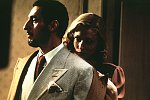
Suzie falls in love with gypsy horse-handler Cesar, while Lola falls
for Dante Dominio, an arrogant Italian opera singer. When the German
army invades Paris, Dante, with Lola at his side, immediately
collaborates with the Nazis, while Suzie joins Cesar and his band of
gypsy musicians.
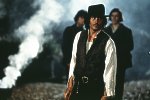
The Nazis have plans to round up the Jews and Gypsies. When Dante
betrays Suzie, Lola decides to leave him: she tells Suzie that she
will help them both get out. Suzie wants to stay and fight but Cesar
encourages her to leave. Suzie is heartbroken, but eventually
agrees.
In the mid-Atlantic the ship to America is bombed. Suzie is rescued
but Lola drowns.
Once in America, Suzie continues her search for her father, which
finally leads her to Hollywood
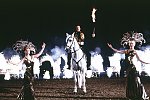
The Main Cast
Suzie CHRISTINA RICCI
Lola CATE BLANCHETT
Dante Daminio JOHN TURTURRO
Cesar JOHNNY DEPP
The Father OLEG YANKOVSKIY
Young Suzie CLAUDIA LANDER DUKE
Directed by SALLY POTTER
|
|
TRIATHLON |
|
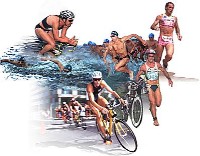
Swim Cycling Running
You don't need to spend
hundreds of dollars to find out what it's like to finish a
triathlon. You will need swim goggles, a swim suit, running
shoes, any old bike and a helmet. You might already own running
shoes, if not, you'll need to get a pair. You probably already own a
towel and running shorts. Voila! Other than the entry fee, you
should be able to finish a sprint distance triathlon with minimal
cost and less training than you might think.

Triathlons are easy and fun.
This philosophy can be said about the
shorter distances as well. But with some determined effort a few
times a week most people are able to complete a short distance tri
in as little as one month. If you are at the point where it's
hard to run more than 3 blocks, find it difficult to swim the length
of a pool, or get a sore butt on the bike, don't fret. We have all
been there. Start slowly and before you know it, you'll be in the
kind of shape most people only dream of.
If you slowly incorporate
one hour of swimming 3 days per week with 5 days of a running
workout and 2 days with a bike ride, you can be finishing a half
Ironman distance tri in as little as 3-6 months depending on your
prior fitness.
It's not hard to imagine that some
people are born with what it takes to win races. I can train all day
or until I'm blue in the face and never come close to winning first,
second or third place. Others must know that also and have other
reasons for showing up on race day. I was able to finish my first
1/2 Ironman distance tri comfortably with a training schedule that
consisted of one long ride per week of 35-70 miles, one long run of
10-18 miles, 3 days swimming, and recovery runs the other days. I
always took one day a week off for rest. I never worked hard in two
sports on the same day. It's of great benefit to follow a long bike
ride with a short run once you are in good shape. This is known as a
brick workout and simulates a race day transition.
Happy Training and Triathloning!
by Hulaman
 klik untuk info lengkap klik untuk info lengkap
|
|
|
MODEL
& FASHION |
|
 
 
 
|
|
LITHUANIA |
 
Lithuania lies in the eastern Europe, on the coast of the Baltic
Sea. In the north Lithuania borders with Latvia, in the east and
south with Byelorussia, in the south-west with Poland and with the
Kaliningrad region of the Russian Federation.Vilnus is the Capital
city of the country. Vilnius is very old city indeed.
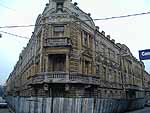
The honor for founding Vilnius is justly given to Gediminas (a
Lithuanian Duke) in the year 1323. Having declared Vilnius his
"royal town", Gediminas created the conditions for its
subsequent growth as the political, economical and cultural center
of Lithuania. The fortress on Castle Hill was used for defense
purposes and was called the Upper Castle.
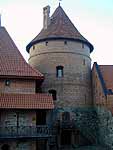 
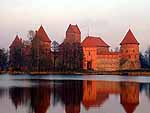
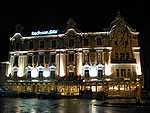
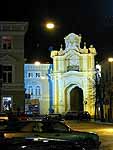 
 klik untuk info lengkap klik untuk info lengkap |
|
SITUS
PILIHAN |
SCIENCE
FOR THE MILLENIUM
Redaksi memilihkan situs ini sebagai situs pilihan minggu ini.
Ditangani oleh NASA, situs ini menampilkan secara menarik ilmu
pengetahuan abad milenium dengan menggunakan media audio dan video.
Di bawah ini adalah salah satu topik yang menarik untuk dicermati.
SPACE TIME WRINKLES
In 1916 Einstein developed his General Theory of Relativity. It
wasn't until much later that most scientists accepted one of the
most dramatic ramifications of his new theory of gravitation: the
existence of black holes from whose extreme gravity nothing, not
even light, can escape. Major advances in computation are only today
enabling scientists to simulate in detail how black holes form,
evolve, and interact. Researchers are betting on powerful
gravitational wave detectors, now under construction, to confirm
that black holes actually inhabit the cosmos.
 klik untuk info lengkap klik untuk info lengkap |
|
FOTOGRAFI |
A BRIEF HISTORY OF
PHOTOGRAPHY
Photography was first used as
a visual representative medium in the early 19th Century. Thomas
Wedgwood was the first person to successfully record an image, but
he was unable to fix the photograph for any extended period of time.
It was not until mid 1827 that Niepce recorded the first successful
picture, however, it required an exposure of eight hours! This was
the starting point for one of the world’s most relished
inventions. The ability to accurately capture a scene without the
need for artistic talent or scientific knowledge.Niepce was a
scientist, as was Louis Daguerre, who continued his work when he
died. They were not artists.
Daguerre can be regarded as the founding father of Photography as he
took Niepce’s process and improved it considerably, reducing the
exposure time to just half an hour and discovering the first
permanent fixing agent - salt.
As the word spread that the Daguerreotype required “no knowledge
of drawing…” and that “anyone may succeed.... and perform as
well as the author of the invention” many showed an interest and
“Daguerreomania” became a craze overnight.
However, even in the very first days of photography it was met with
opposition, especially from artists who believed it could seriously
threaten their professions; one journalist even regarded the new
invention as satanic:
“The wish to capture evanescent reflections is not only
impossible... but the mere desire alone, the will to do so, is
blasphemy. God created man in His own image, and no man- made
machine may fix the image of God. Is it possible that God should
have abandoned His eternal principles, and allowed a Frenchman ...
to give to the world an invention of the Devil?” Article in the
Leipzig City Advertiser 1839/40
 klik untuk info lengkap klik untuk info lengkap
|
|
![]()
![]()